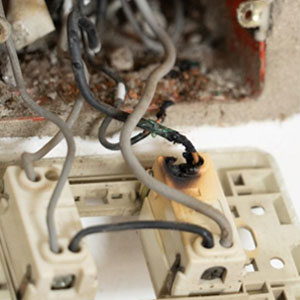
In this article, you can discover:
- The diverse injuries caused by defective products, from burns to brain damage.
- How manufacturers can be liable, despite disclaimers, under California’s strict liability laws.
- The range of damages claimable in product liability cases, including punitive damages.
What Are The Most Common Types Of Serious Injuries Sustained From Defective Products?
Have you ever worried about the safety of the products you use daily? Unfortunately, defective products can lead to a wide range of serious injuries. Here are some common risks you should be aware of:
- Electrical Hazards: When household appliances malfunction, they can cause fires or electrical burns. It’s not just about a faulty toaster – it’s about keeping your home safe.
- Cuts and Wounds: Those DIY tools aren’t always as reliable as they seem. A defective power tool or a kitchen knife with a faulty handle can turn a simple task into a trip to the emergency room.
- Head and Brain Injuries: Safety should be a priority, but what if your protective gear fails you? Helmets or sports equipment that don’t live up to their promises can lead to serious head injuries, including concussions.
- Food Safety Concerns: Ever thought about what’s in your food? Defective packaging or contamination can lead to food poisoning or exposure to harmful substances, a risk no one should have to take.
- Automobile and Furniture Risks: That new car or chair might look sturdy, but structural flaws can result in unexpected accidents, causing fractures or even worse injuries.
- Choking Hazards for Children: Small parts on toys or household items can be a choking hazard for little ones. It’s crucial to be vigilant about what’s within their reach.
- Health Risks from Medications and Implants: Medications and medical devices are supposed to improve your health, not harm it. Yet, sometimes, they can cause organ damage or fail unexpectedly, leading to severe health issues.
Understanding these risks can empower you to take action if you find yourself facing harm from a defective product. If you’re dealing with any such injury, knowing your rights is the first step toward getting the justice you deserve.
If The Product Has A Disclaimer, Can The Manufacturer Still Be Held Liable For The Injuries?
Yes, in California, a manufacturer can still be held liable for injuries caused by a defective product, even with a disclaimer. This is due to the principle of strict liability, which holds manufacturers, distributors, and others in the product distribution chain accountable for injuries from defective products, regardless of disclaimers.
This applies to products with defective design, manufacturing issues, and inadequate instructions or warnings about potential harm. The intent is to ensure that manufacturers bear the cost of injuries from defective products, not the injured individuals who lack the power to protect themselves.
However, strict liability is not absolute. The manufacturer is not an insurer of product safety. It must be demonstrated that the defect caused the injury. This does not extend to defects arising from using the product with another product or replacement parts made by others, where the dangerous features of these parts were not integral to the original product’s design.
Even with a disclaimer, a manufacturer could be liable, particularly if the product was placed on the market knowing it would be used without inspection for defects. The nature of the defect, the type of product, and the relationship between the injury and the defect are crucial in determining liability in each case.
What Damages Can I Claim In A Product Liability Case?
If you’ve been injured from a product, you are likely wondering what kind of compensation you may be able to claim. You should know that the financial recovery in a product liability case is similar to a personal injury lawsuit.
This means you could be entitled to reimbursement for your medical expenses, any property damage (like replacing a TV if your house was damaged), and compensation for the pain and suffering you endured. Sometimes, you can even seek punitive damages, which are designed to penalize the manufacturer for their negligence.
It’s important to remember, though, that your workplace isn’t responsible if you’re injured by a defective product at work. Instead, you might need to look at workers’ compensation. And if you’re highly skilled or trained in using a certain product – like an airline pilot with an airplane – the manufacturer might not be held liable if they assume you already know the risks involved.
Is There A Deadline To File My Product Liability Claim In California?
Generally, you have two years from the injury, or from when you should have known about the injury, to take legal action. This is known as the statute of limitations.
However, if you weren’t immediately aware of your injury or its link to a defective product, this time frame might start later, thanks to the ‘discovery rule.’ Essentially, this rule means the clock starts ticking when you discover, or should have discovered, the injury and its cause.
This extended timeframe can be particularly important in cases involving toxic substances where injuries might not be immediately apparent. If you are not sure who is responsible for the defective product, you can still start your lawsuit against a ‘Doe’ or unknown defendant. Once you find out who they are, you can update your lawsuit to include their real name, and it will be treated as if you filed it from the start. For more information on Injuries Sustained From Defective Products, an initial consultation is your next best step.
Get Your Questions Answered. Call For Your
Free 30 Min Evaluation Today! (310) 982-2291